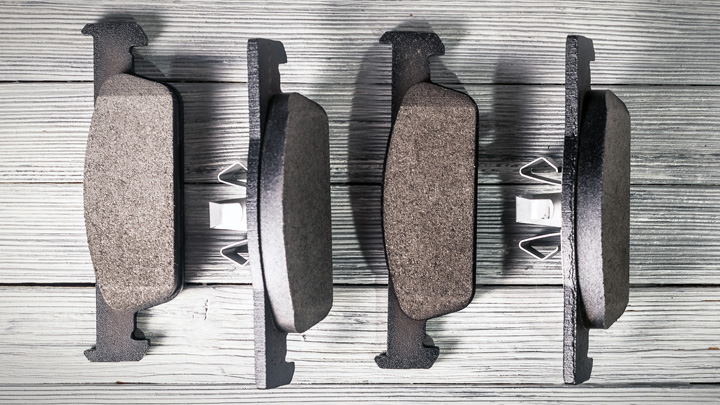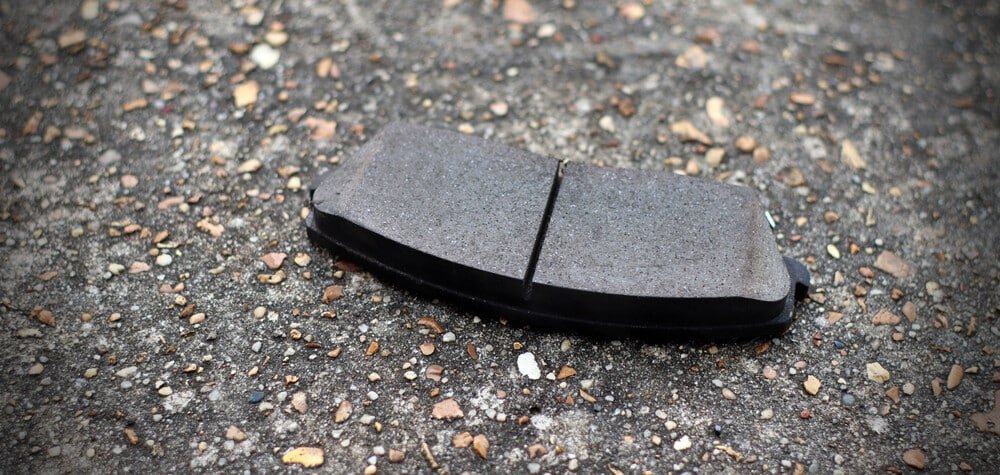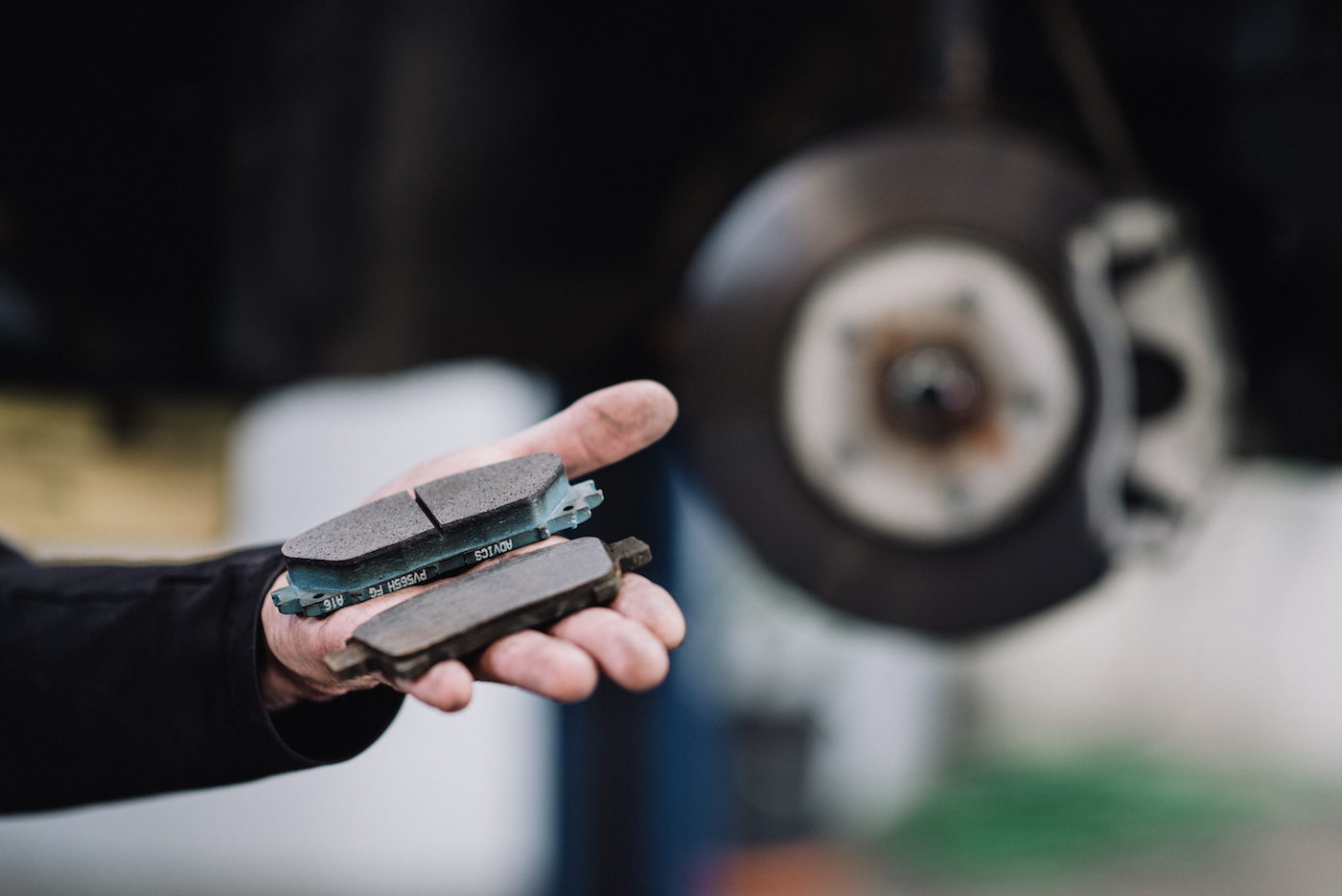If you are looking for an upgrade on your current brake pads, you may have heard of ceramic brake pads or even carbon-ceramic brake pads. Ceramic brake pads are a type of friction material used in automotive and aircraft braking systems. They are different from other types of brake pads. They are made chiefly of ceramic materials instead of the traditional metallic or organic materials used in brakes.
Table of Contents
Ceramic brake pads offer several advantages over other brake pads, which is why many people opt for this type of brake pad today. In this article, we are going to discuss what are ceramic brake pads, how they work, why they are better than other types, and the best ceramic brake pads that are suitable for your needs.
Bonus, we will also discuss carbon-ceramic brake pads!
What Are Ceramic Brake Pads?
Ceramic brake pads are made primarily of ceramic fibers and fillers, with a small percentage of metallic fibers and other materials added. Ceramic brake pads use friction to stop a vehicle by converting kinetic energy into thermal energy (heat).
Ceramic materials have high heat transfer properties that allow them to dissipate this heat quickly, reducing stopping distance. Ceramics also have low wear rates compared to other types of brakes like organic or metallic type brakes, allowing for longer pad life without sacrificing performance.
Ceramics offer good bite at low temperatures but can fade under higher temperatures due to their limited ability to absorb heat from the rotating disc (rotor) during braking operations without significant reductions in coefficient-of-friction values over time.
What Are The Different Types Of Brake Pads?
There are three main types of brake pads: metallic, organic, and ceramic. Let's dive into each one of them and see the differences.
Metallic Brake Pads
Metallic brake pads (or sometimes referred to as semi-metallic brake pads) are made of a combination of metals, including iron, copper, lead, nickel, and tin. These materials provide good stopping power and durability, especially when equipped with decent brake rotors.
Compared to organic brake pads, metallic brake pads are much more responsive, providing the driver with better control of the vehicle. However, these types of pads wear down faster and create significantly more dust.
The downside of metallic brake pads or semi-metallic pads is that they can produce a great deal of noise when braking.
Organic Brake Pads
Organic brake pads contain organic fibers mixed with resin to create a friction material. As a result, they offer good stopping power and quiet operation.
Organic brake pads are great for those who want better control of the vehicle and they hold up well against excessive heat.
The downside of organic pads is that they have shorter lives than other types of brake pads. Generally, organic brake pads wear down over time, which causes them to become less effective and can result in a significant loss of braking power.
Ceramic Brake Pads
Ceramic brake pads are the newest type of brake pad and use ceramic materials as their primary component.
Ceramic brake pads offer the best all-around performance characteristics of any brake pad, including high thermal efficiency, low wear rates, good cold bite, and low noise levels.
However, the downside of ceramic brake pads is that they can be more expensive than other types of brake pads. Many people think that ceramic pads are too expensive. While this may be true, keep in mind that ceramic brake pads can last three times longer than standard brake pads.

Why Should You Use Ceramic Brake Pads?
A decent ceramic braking system is a good choice for anyone who wants to improve the performance of their brakes. Ceramic brake pads offer many advantages over other types of pad material, such as:
High Thermal Efficiency
Ceramics have high heat transfer properties, which allow them to dissipate heat quickly, reduce stopping distance, keep the brakes from overheating under extreme conditions, and help to prevent rotor warping.
Lower Wear Rates
Ceramics also have low wear rates compared with other types of brakes, like organic or metallic brakes. This advantage allows for longer pad life without sacrificing performance characteristics.
These characteristics include biting at low temperatures and fading under higher temperatures due to their limited ability to absorb heat from the rotating disc (rotor) during braking operations without significant reductions coefficient-of-friction values over time.
Good Cold Bite
Ceramic brake pads provide good braking performance at low temperatures, making them ideal for use in colder climates.
Low Noise Level
Do ceramic brake pads squeak? This is one of the most frequently asked questions.
The short answer is no. Ceramic brake pads are a lot quieter than metallic ones because they do not contain any metal particles. These metal particles are what cause vibration noise when pressed against each other.
Less Brake Dust Produced
Ceramic brake pads are also less likely to cause brake dust, which is the black film that builds up on wheels from the abrasion of brake pads. Brake dust can be difficult and time-consuming to clean and can even damage painted surfaces if not removed promptly.
How Much Do Ceramic Brake Pads Cost?
Ceramic brake pads can be more expensive than other types of brake pads. They cost between $20 and $40. However, the superior performance and long life of ceramic brake pads make them a good value in the long run.
If you are looking to improve your braking performance, the added cost is often worth the benefits that ceramic brake pads provide. These benefits include improved stopping power, longer pad life, and less noise.

How Loud Are Ceramic Brake Pads?
Ceramic brake pads are quieter compared to other types of brake pads. This is because ceramic brakes don't contain metal particles, which reduces braking noise by about 50 percent compared to metallic-type brakes.
Are Carbon Ceramic Brake Pads The Best Type You Can Find?
Carbon ceramic brake pads are ceramic pads that use carbon instead of ceramic. They offer the same advantages as ceramic brake pads, but they are more expensive and harder to find in stores. Carbon ceramics also tend to be less effective at high temperatures.
Overall, ceramic brake pads are better for your car because they have many advantages over other types of brakes. We have covered all these benefits above, and we're sure you will agree that ceramic brake pads are the best.
These benefits make ceramics ideal as an upgrade from stock or OEM factory-installed pads on most vehicles. Ceramic brakes also produce less brake dust than other pads, which helps keep wheels cleaner!
Where To Find The Best Ceramic Brake Pads?
When looking for ceramic brake pads, it is essential to find a reputable supplier. An excellent place to start is with the brake pad manufacturer's website. There you can find a list of certified dealers that carry their products.
You can also search online for "ceramic brake pads" or "carbon-ceramic brake pads" to find retailers that carry these types of brakes.
Don't forget to check out our store, too! We have a great selection of the best ceramic brake pads at the best price you can find on the market.
Visit Road Cartel and feel free to talk to our team. We will guide you until you find the best carbon-ceramic brake pads for your needs!

